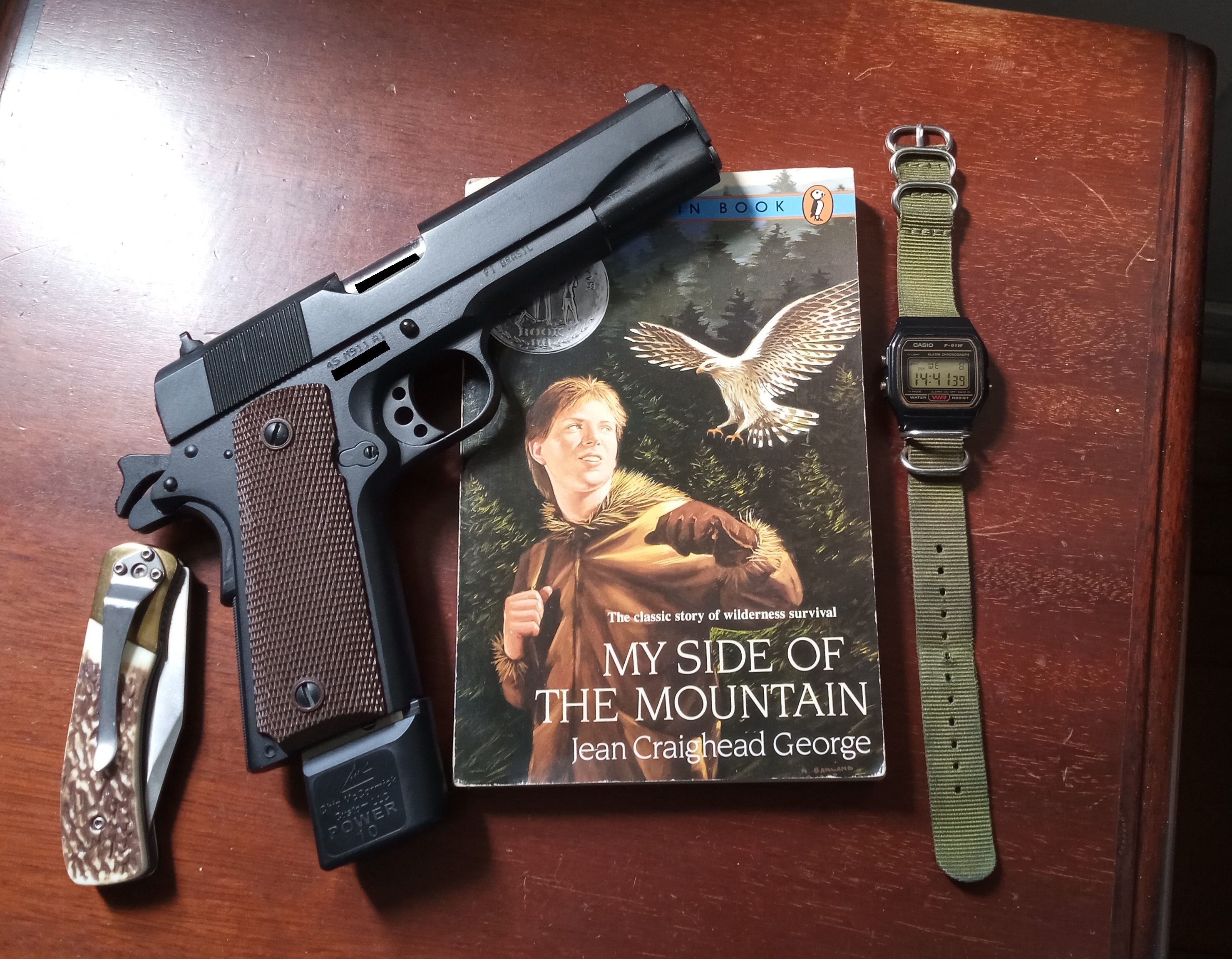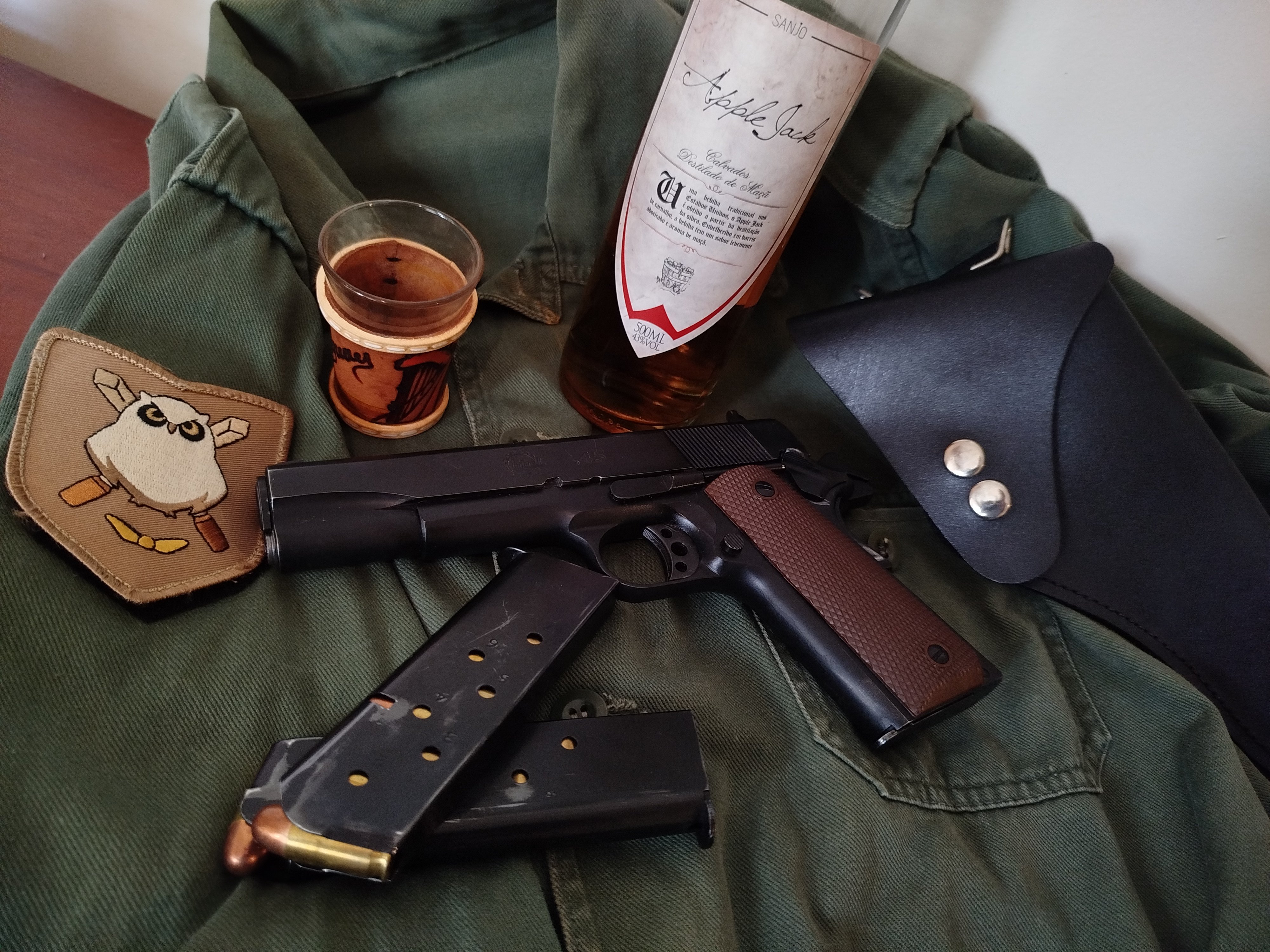IMBEL M911 A1
IMBEL (Indústria de Material Bélico do Brasil – “War Materiel Industry of Brazil”) is a conglomerate of state-owned factories run by the Brazilian Army. The most famous facility in the group is the Fábrica de Itajubá (F.I.) in Itajubá, Minas Gerais. This factory produces small arms for the military, police, civilian market, and export. IMBEL is best known abroad for its excellent FAL rifles and, in the Brazilian civilian market, for its wide range of 1911 pistols.
These 1911s come in many configurations: .380 ACP (due to past civilian caliber restrictions), 9mm and .40 S&W (mainly for the Army and state police forces), and the classic .45 ACP for collectors and enthusiasts. They are offered in Government, Commander, and Officer sizes. There’s even a “CCO”-style model (Commander slide on an Officer’s frame) in .380 ACP called the MD1N with 9+1 capacity, aimed at concealed carry. IMBEL also makes double-stack models inspired by Para-Ordnance, such as the MD2 – essentially a P14 clone that holds 12+1 rounds of .45 ACP and uses the same Mec-Gar magazines.
The Brazilian Army first adopted the Colt 1911 in 1937. Early contract pistols were made by Colt and bear “Exército Brasileiro” engravings and the Brazilian coat of arms on the slide. During WWII, the Brazilian Expeditionary Force used some 1911s, though most sidearms were Lend-Lease S&W 1917 revolvers. More Colt 1911s arrived later, and in 1965 the Itajubá factory began licensed domestic production. These early guns were called the “Pistola Itajubá .45”. Roughly 50,000 were made between 1965 and 1975.
In the 1970s, during the military regime, IMBEL was created and absorbed the Itajubá factory along with others (such as the Estrela gunpowder plant and facilities that produce tank and artillery shells). Today IMBEL manufactures everything from 1911s and FALs to the modern IA2 rifle, 105 mm shells, and military radios.


On the left: The M911A1 with Double Diamond grips by LS-Grips, making a classy duo with the Taurus 85, a common choice for plainscloth São Paulo State Police agents in the 1990s.
On the right: My concealed carry holster, a leather IWB at 3oclock by Audaz Coldres, and the Chip McCorninck 10 rounder as the backup spare magazine.
The M911A1 (often just called the M911) is probably the oldest design still in IMBEL’s catalog. It is a faithful, licensed copy of the Colt 1911A1 with:
- Arched mainspring housing
- Government-length slide
- Black bakelite grips
- No beavertail, wide spur hammer and a grip safety
- Small early-style thumb safety
- Fixed sights (no dovetail) but with Vietnam-era three-dot inserts
- Lanyard loop on the mainspring housing
It ships in a plastic case with three USGI-style 7-round magazines, a cleaning rod, and – very old-school – a CD-ROM containing a PDF manual. IMBEL uses traditional cold-forged barrels and forged carbon-steel slides and frames. The pistols are completely parts-compatible with any standard single-stack 1911.

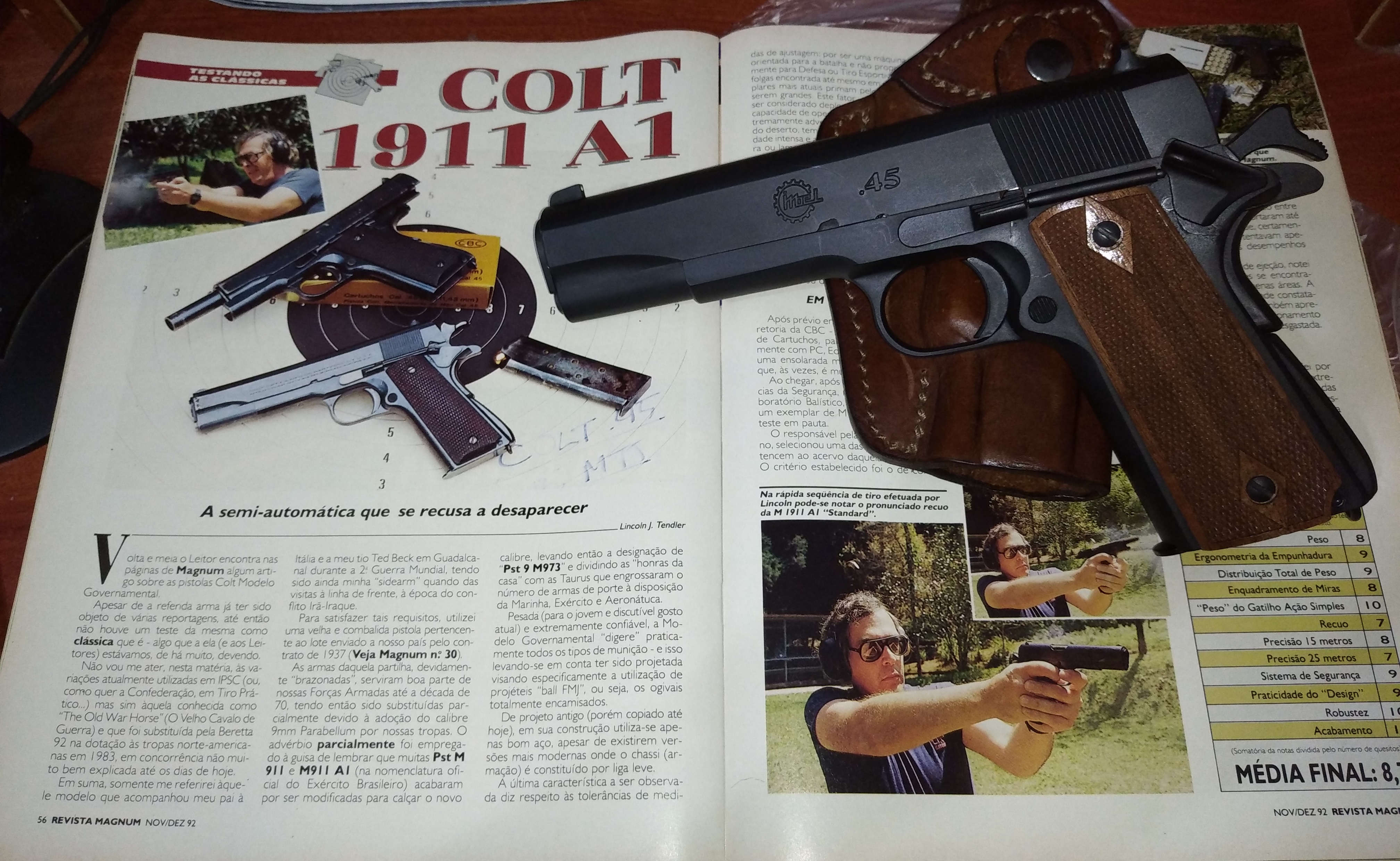
The pistol comes out of the box with three 7-round magazine, a cleaning rod, a CD-ROM with a PDF manual, very old school style, here is it with the original Black Bakelite grips, and the LS Grips with double diamonds I've acquired later, on top of a Colt 1911 article from the excelent vintage Magnum Magazine
Out of the box it came with black bakelite grips. I later swapped them for beautiful double-diamond rosewood grips from LS Grips, then switched again to surplus USGI brown bakelite grips from the CMP because they looked more “milsurp correct”. I also changed the arched mainspring housing to a flat one (removing the lanyard loop that was digging into my palm during reloads) and installed a flat-face trigger from a friend’s Taurus PT1911. The longer, flat trigger feels much better to me and cured the slight left push I was getting with the original short trigger.
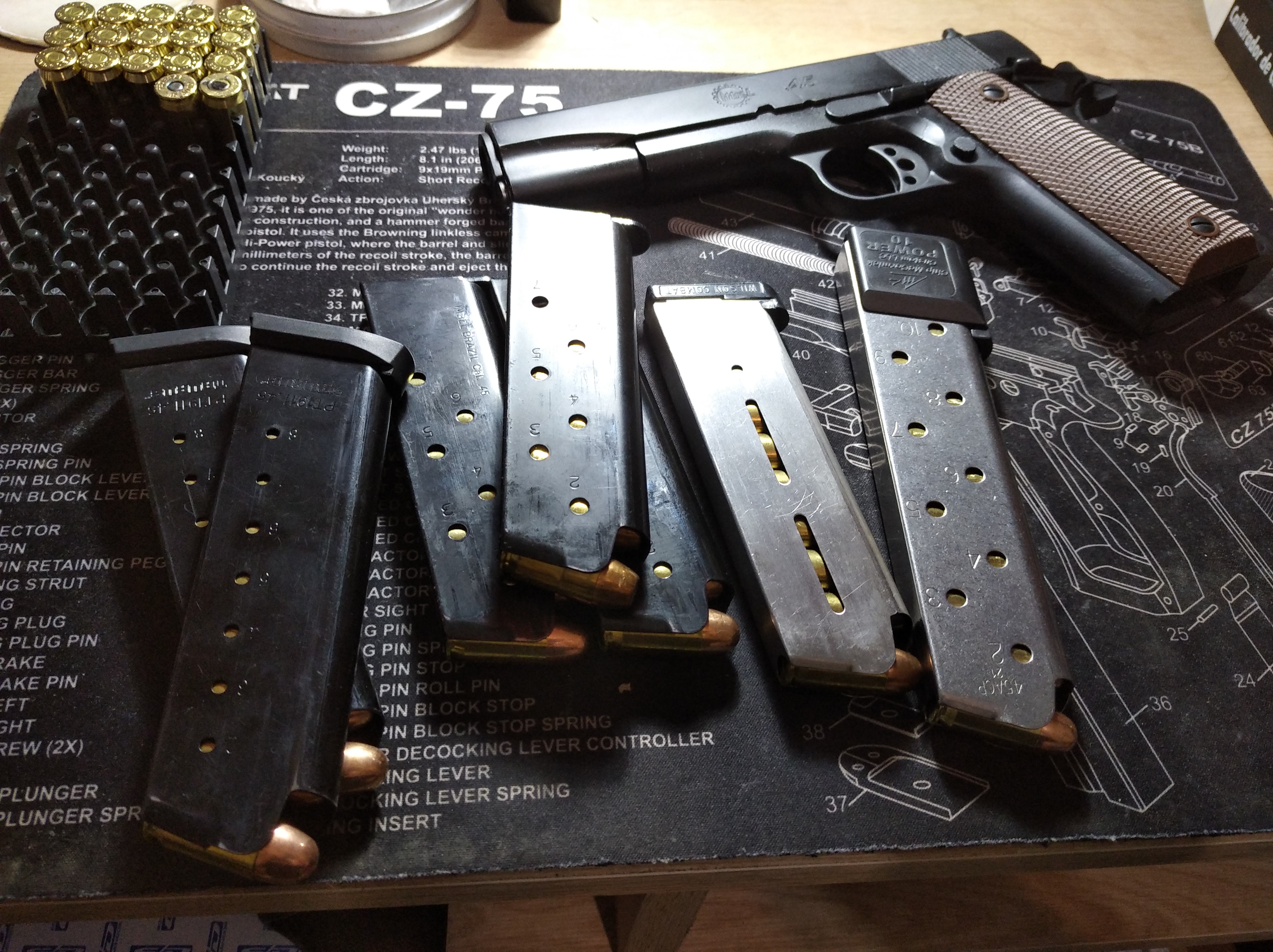
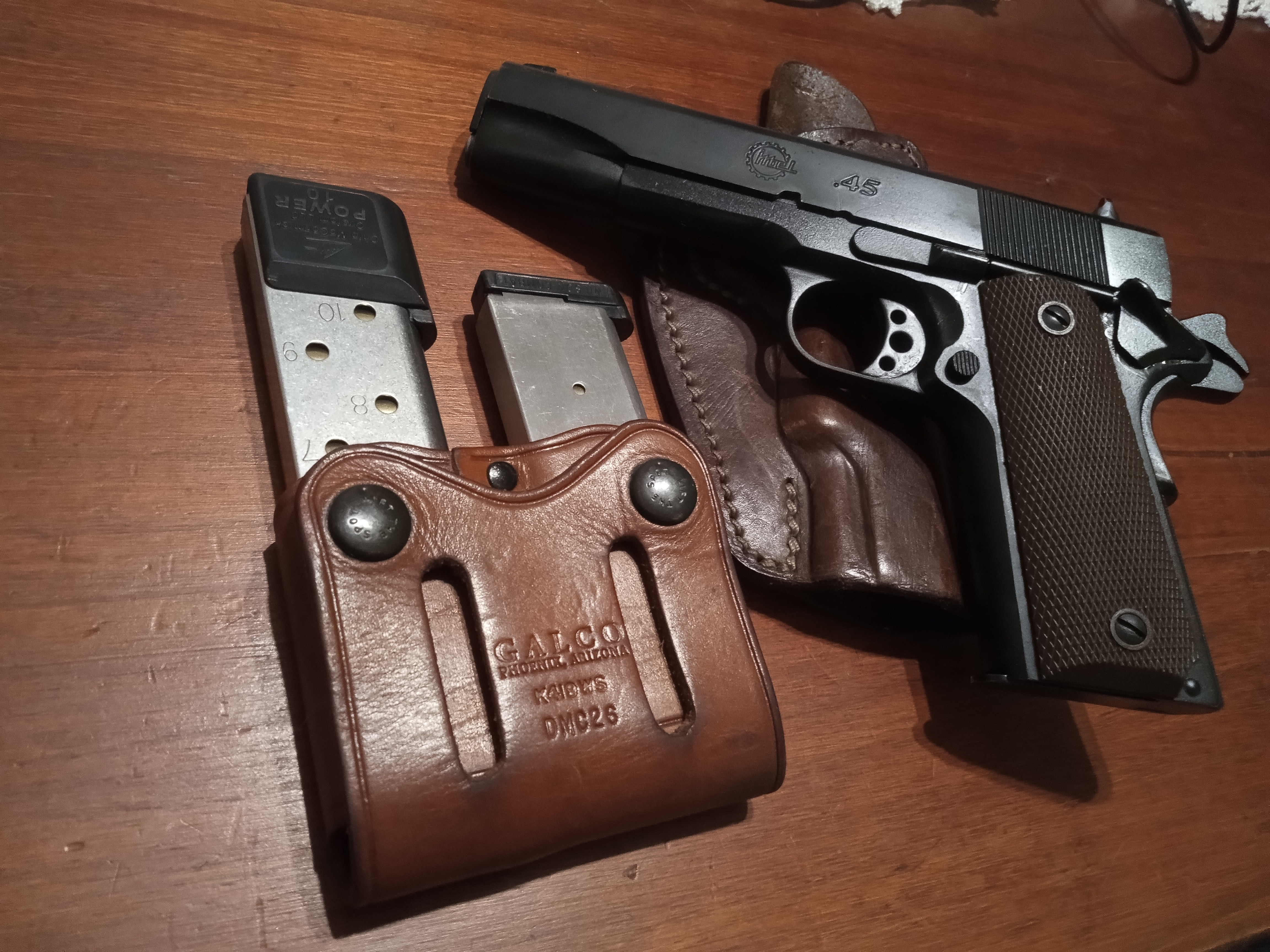
Magazines range from classic 7-round flush-fit USGI to reliable 10-round Chip McCormick Power Mags (my favorite for backup carry). All work perfectly and fit in my Galco leather mag pouch.
This is hands-down my favorite pistol and the one I’ve shot the most – roughly 5,000 handloads so far. The trigger now breaks at a crisp 2.5 lbs (measured on a friend’s Lyman scale) without ever changing springs; it just smoothed out with use. I’ve achieved my best handgun groups ever with it, especially using semi-wadcutter handloads that it loves. Despite the vintage-spec barrel and feed ramp, it digests modern hollow points without issue thanks to a slightly updated feeding ramp.
Reliability has been 100 % with good ammo. Every single malfunction in five years was caused by bad handloads or faulty CBC/Magtech factory ammunition.
Groupings at a range of 10 meters, and a view of the 3-dot sights after I've painted them with luminescent green ink:


Buying a gun in Brazil is a slow, bureaucratic nightmare, so I wanted to get it right the first time. This was only the third firearm I ever owned, but the first I bought brand new, ordered directly through IMBEL’s distributor. From payment to pickup it took about 40 days – much faster than the “one-year wait” rumors you always hear (maybe gun-shop talk to keep resale prices high when new ones are in stock).
Groupings were solid: 230 wadcutter handloads at 10 meters with fast follow-up shots.
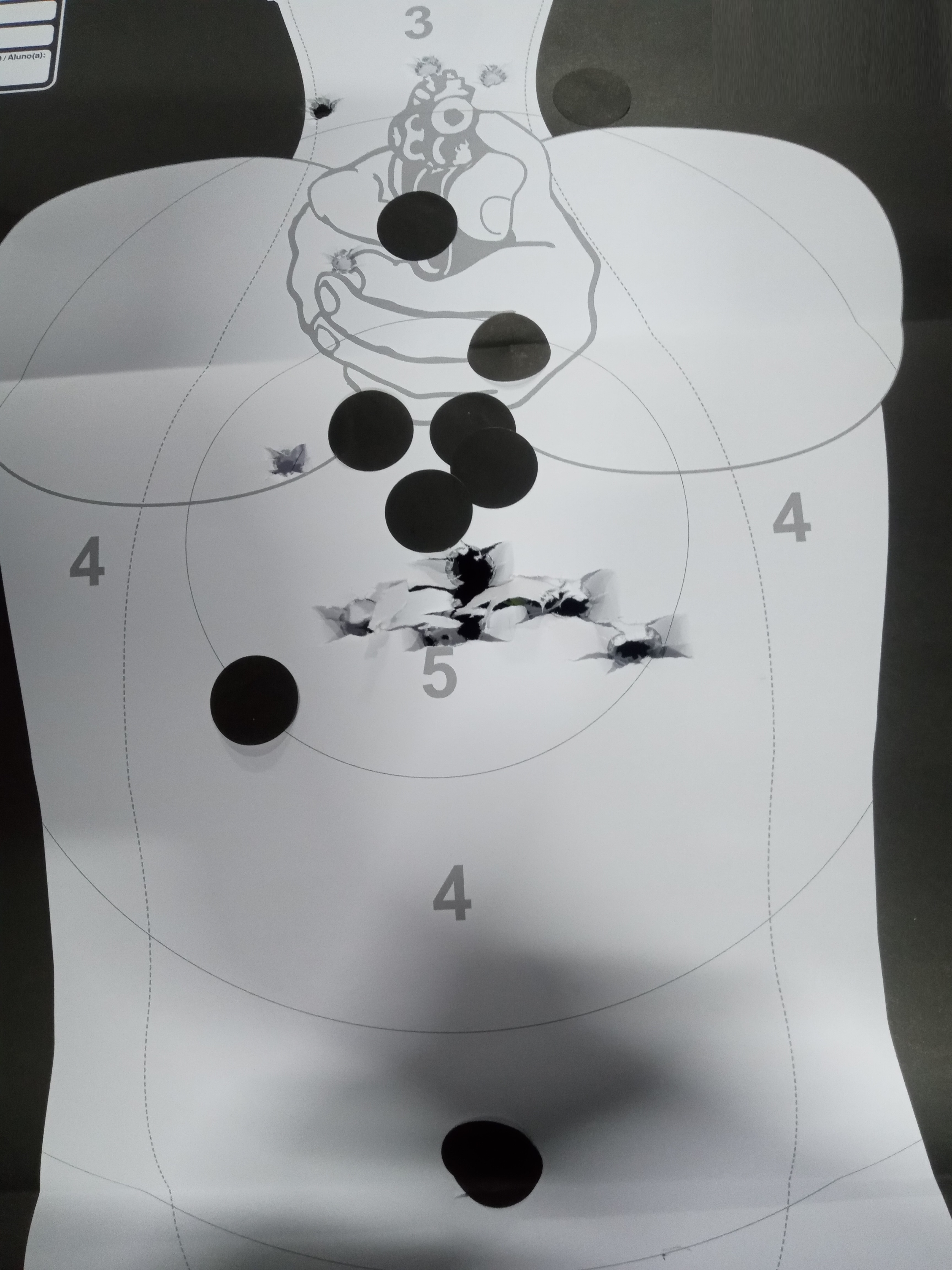

Within the budget that rules out most imports, I believe the single-stack IMBEL M911A1 in .45 ACP is the most trustworthy, long-term Brazilian handgun you can buy. Yes, .45 ACP ammo is less common here, but the fact that IMBEL stuck so faithfully to the original Colt design and tooling gives me total confidence. The main alternative I considered was the Taurus PT92 (built on old Beretta 92 tooling), but Taurus made several changes to the original design and their QC reputation is spotty – stories of decocker issues and even new guns arriving rusty pushed me toward IMBEL.

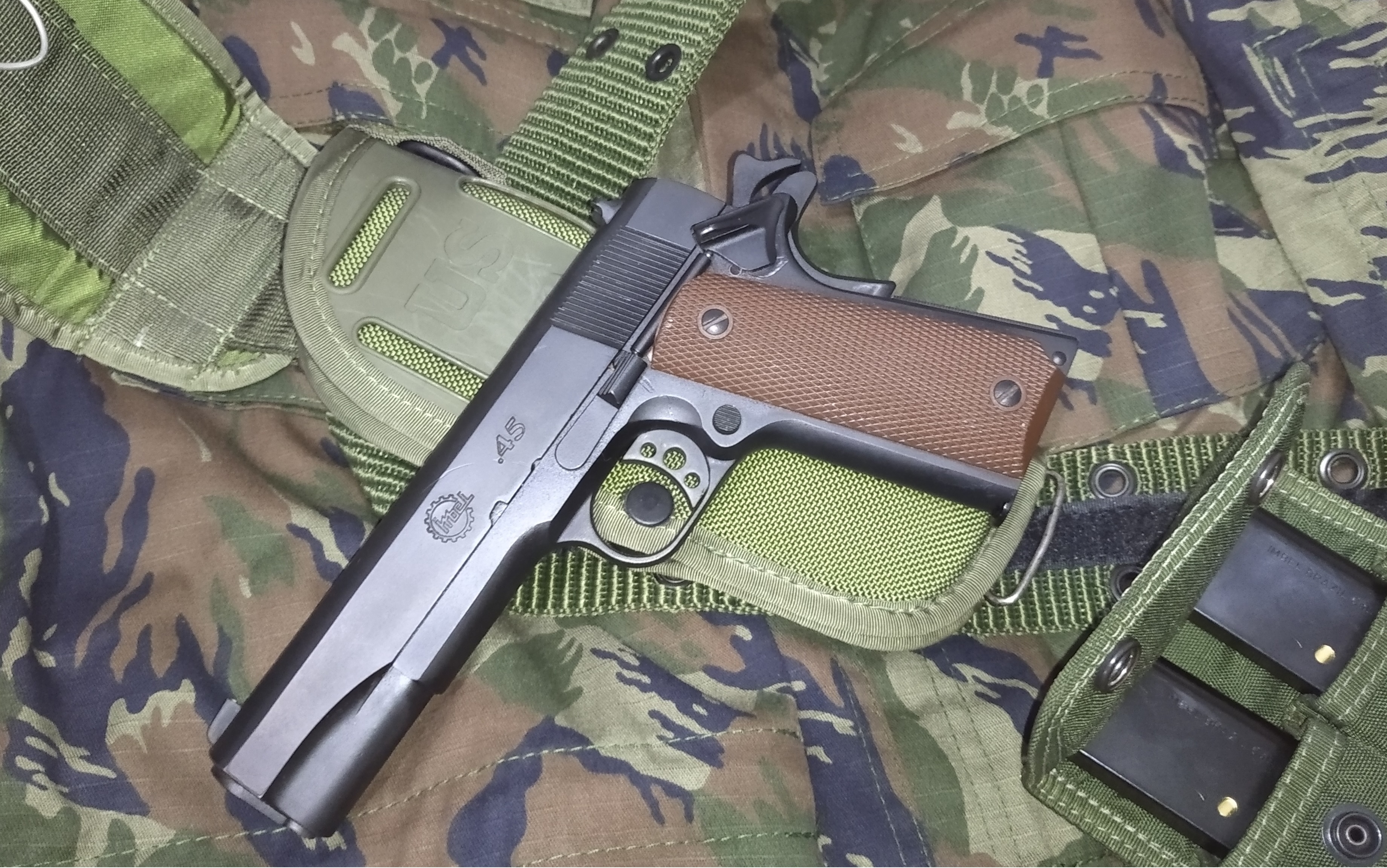
On the left: Side-by-Side comparison between the two Brazilian 1911s, a Taurus PT1911, featuring a commander hammer, beavertail, novak sights and full length guiderod, and the M911A1
On the right: The M911A1 on a surplus Bianchi M12 holster with an ALICE pistol belt and a Brazilian Air Force surplus Lizard Camouflage jacket.
I’ve carried this pistol hiking and camping in humid jungle conditions, usually in a surplus Bianchi M12 holster on an ALICE belt. It has also served as my main home-defense and occasional concealed-carry gun (IWB at 3 o’clock with a leather Audaz Coldres holster or under a jacket in a shoulder rig). It’s heavy and prints more than a modern polymer gun, but it’s very doable with the right cover garment.
If you can only own one traditional 1911 in Brazil, the IMBEL M911A1 is the one I recommend without hesitation. It’s a piece of history that still shoots like a dream.


On the right: The 1911 was one of the first pistols to have a simple takedown process without any tools to field strip it for cleaning on the field.
On the left: a view of the Semi Wadcutter Handloads that seem to be it's favorite for accuracy.
Pros
- Outstanding ergonomics and pointability
- The best trigger of any pistol I own
- Complete compatibility with the enormous 1911 aftermarket and holster ecosystem
- Cold-forged barrel for extreme durability
- Superb accuracy
- A century-old design with proven battlefield reliability
- Heavy and large for all-day concealed carry in tropical weather
- Requires regular oiling (something many new polymer-gun owners aren’t used to)
- Low capacity – 7+1 flush, 10+1 is the longest magazine I fully trust
- Right-hand-only controls from the factory (though easily upgraded)
